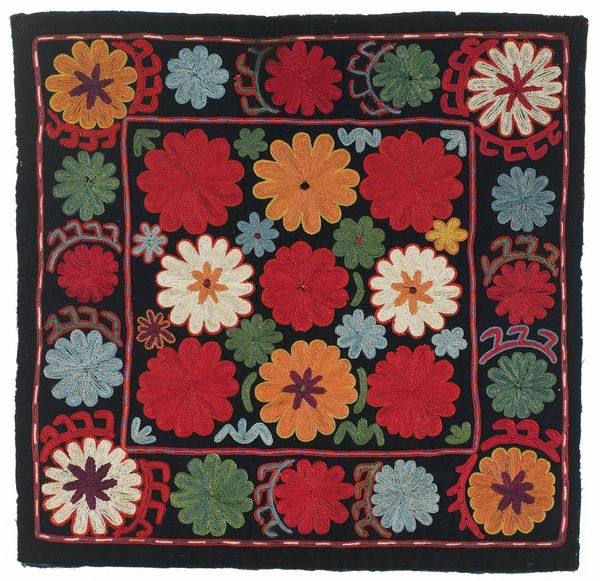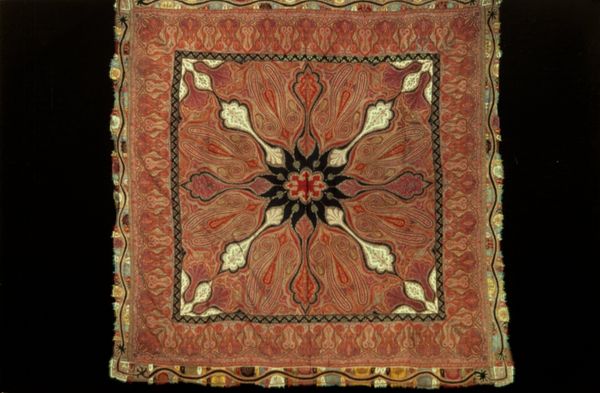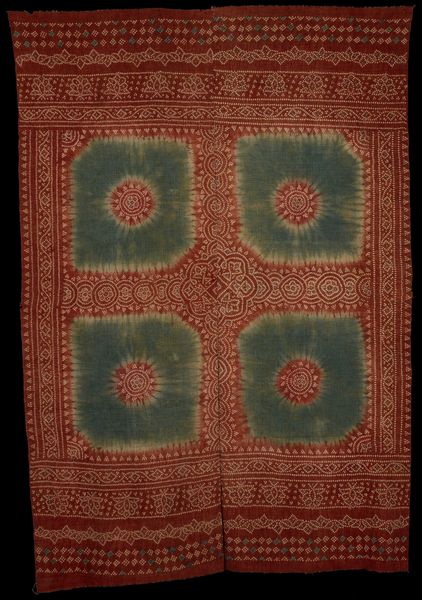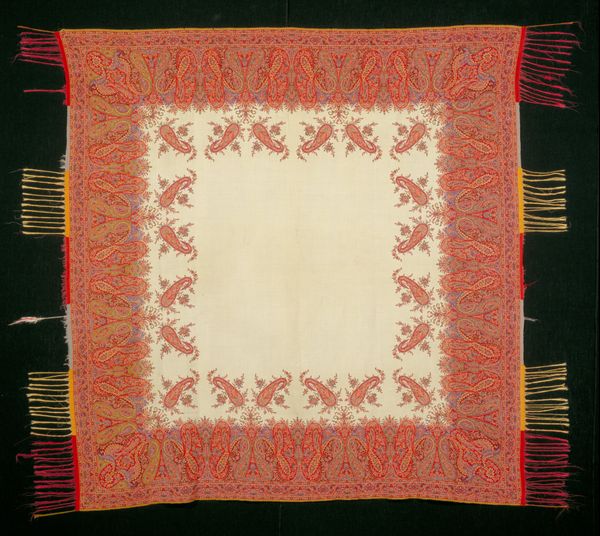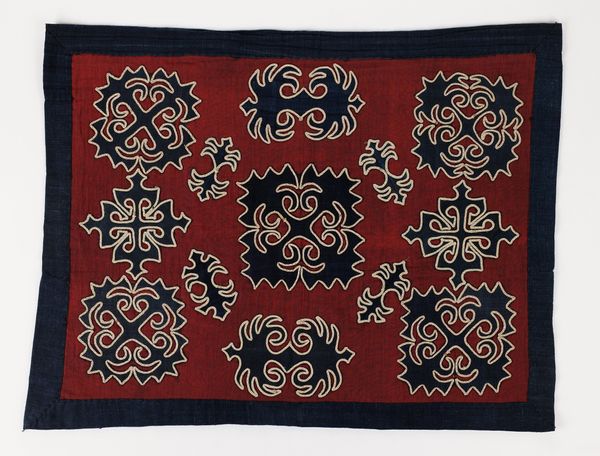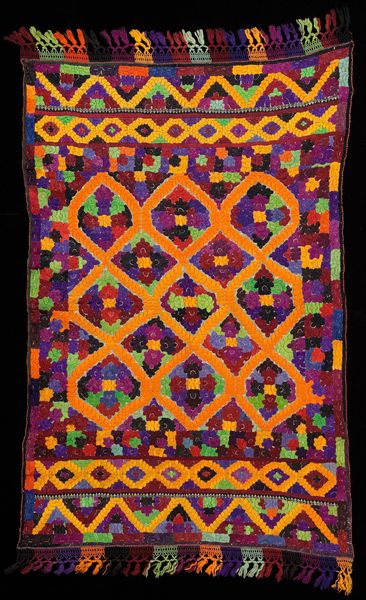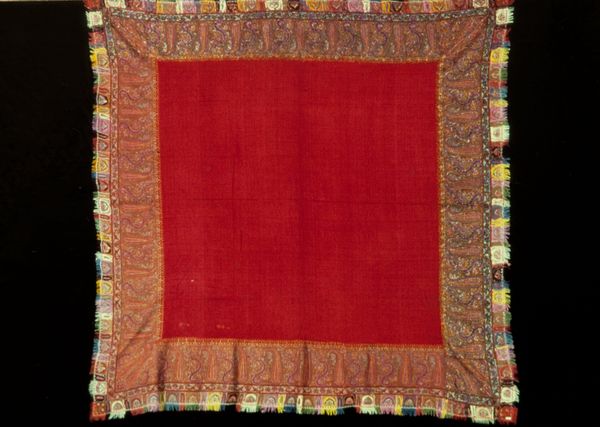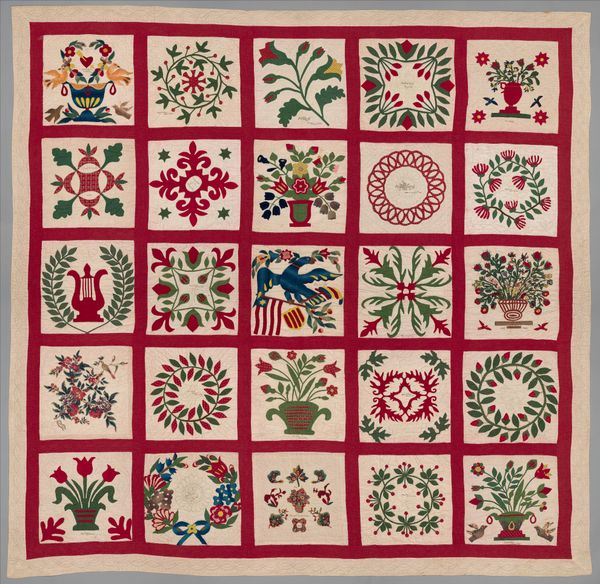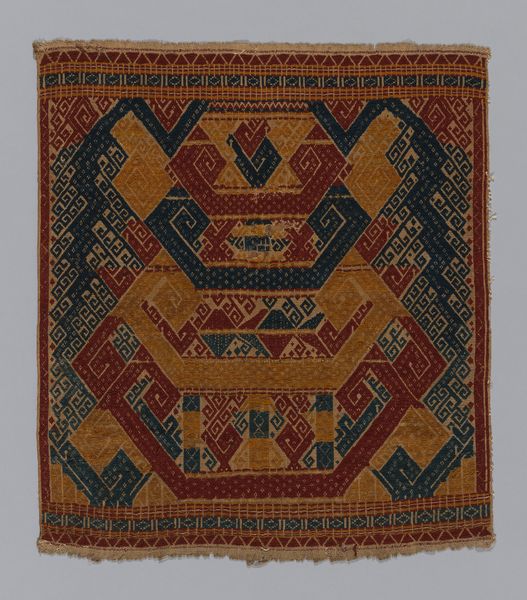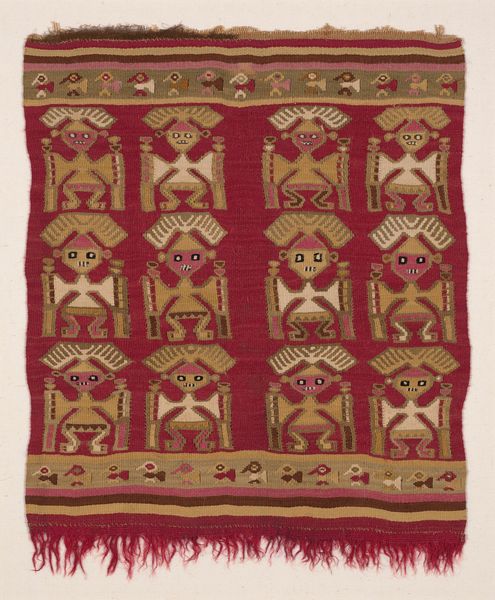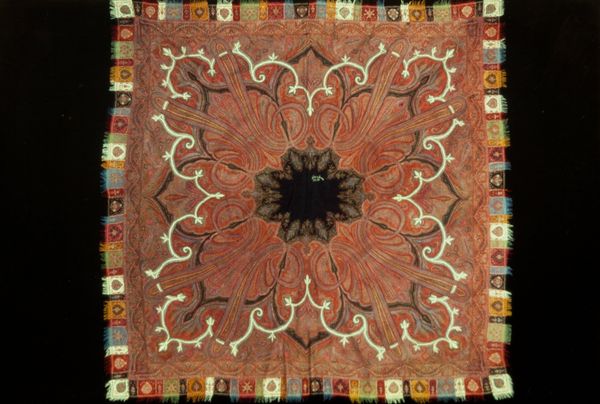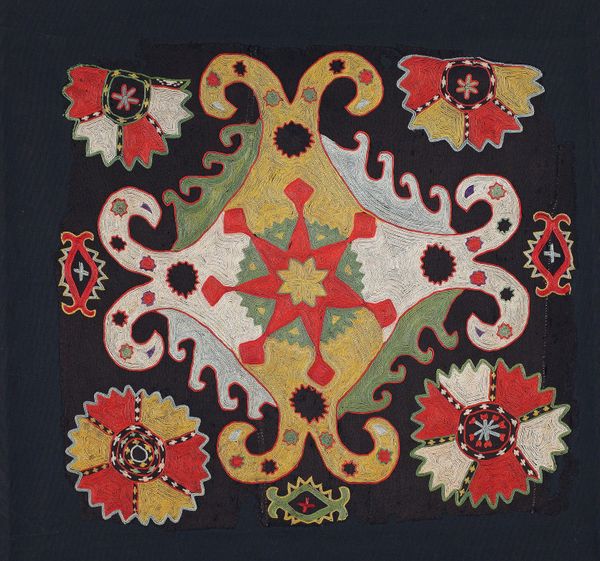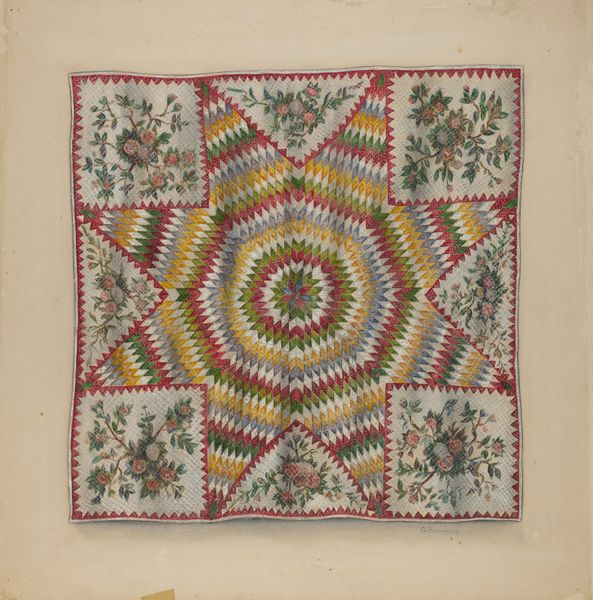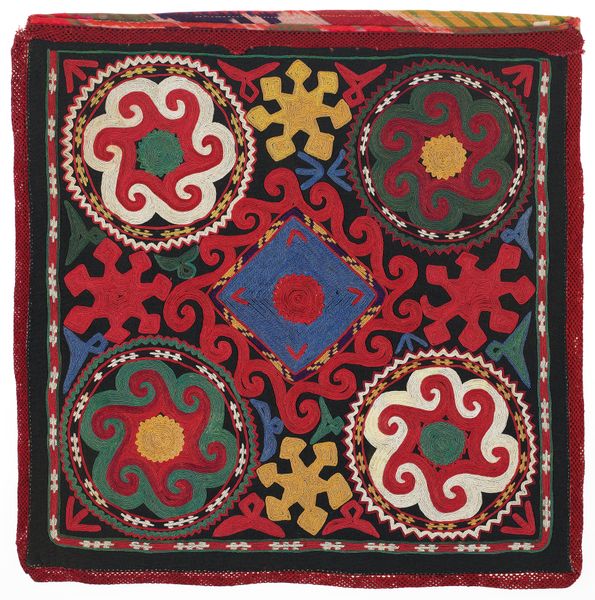
silk, textile
#
silk
#
pattern
#
pattern
#
asian-art
#
textile
#
geometric pattern
#
geometric
#
decorative-art
Dimensions: 22 x 22 in. (55.88 x 55.88 cm)
Copyright: Public Domain
Editor: This decorative textile is called "Ilgich," crafted around the 19th century, and its medium is silk. I'm initially struck by the geometry and the slightly faded colors, which give it an aged, yet vibrant feeling. How would you approach interpreting this piece? Curator: From a materialist perspective, let's consider the labor involved in its creation. Silk production itself implies a complex social structure. Who cultivated the silkworms, who spun the silk, and who ultimately embroidered this piece? Understanding these processes illuminates the lives of those involved. Editor: That's fascinating! I hadn't thought about it in terms of the individual artisans. Curator: Absolutely. Furthermore, the choice of materials speaks volumes. Why silk? Was it a readily available resource, or a luxury good? The geometric patterns too, could hold significant social or cultural information, indicating tribal affiliations, social status or serving as talismans. Does this intricacy and repetitive pattern remind you of anything? Editor: There is something symbolic in the shapes of the embroidery; they look somehow totemic. I noticed also what looks like wear on the left. How would that relate to this "Materialist" perspective? Curator: That wear pattern suggests use and circulation within a community. Was this Ilgich purely decorative, or did it have a functional role? The wear indicates value—that this wasn't simply an object to be admired, but an item actively involved in daily life, a silent witness to human action. Consider that labor against time, visible in the condition of the material. Editor: This changes my entire view. It’s no longer just a pretty textile, but a window into the lives and labor of a community. Thanks! Curator: Exactly! By focusing on materials and process, we unravel a richer story about the artwork and those who created and used it. Material analysis makes this so.
Comments
No comments
Be the first to comment and join the conversation on the ultimate creative platform.
